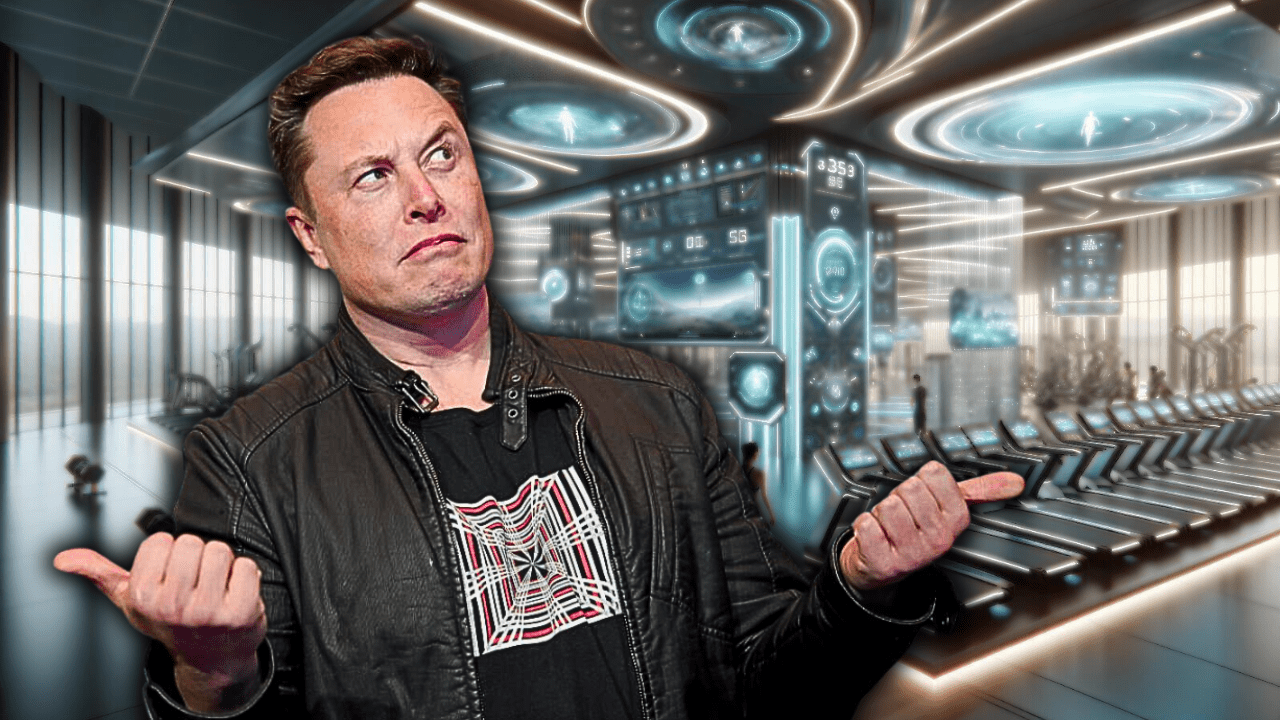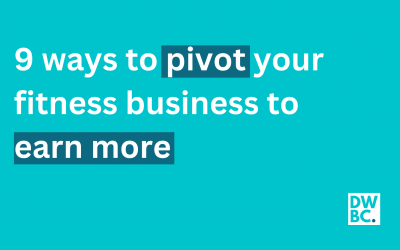Summary:
- Musk solves humanity’s big problems; gym owners should solve clients’ big problems.
- Musk embraces failure for learning; gyms should innovate through failures.
- Musk innovates systems for efficiency; gyms should streamline and optimise operations.
- Musk thinks long term; gyms should plan for future impacts and potential.
Actionable Take-Away: As you’re thinking about your gym’s future, experiment (and fail) with multiple ideas that solve big, long term problems, then systemise the solutions.
Love him or hate him, there’s no denying Elon Musk is a rock star in business. A real life Tony Stark, there’s no one progressing human civilisation as fast or as broadly.
I was recently listening to Water Isaacson’s excellent biography of Musk, and it got me thinking. If Musk turned his business genius to running a gym, what would it look like? Success leaves clues, so what clues can we uncover in Musk’s billion dollar companies to help gym owners?
As I listened to Musk’s story, my mind was making connections between his successes, and how I could learn from those successes and implement them in my own business, and for the fitness business owners I mentor.
How would Musk start a gym?
So if Elon Musk ever wanted a bigger challenge than building rockets to Mars and decided to open a gym, here’s how I think he’d do it.
There were four main lessons that jumped out to me. So let’s unpack each lesson, look at how Musk has achieved success in that area, and then relate that directly to building a more successful gym.
First, Musk’s four lessons to gym owners:
- Solve big problems.
- Pursue failure.
- Innovate and improve systems.
- Think long term.
Let’s dig in.
Lesson 1: Solve Big Problems.
The problems Musk is solving:
If there’s one thing you can’t deny, it’s that Musk is solving the biggest problems facing humanity.
SpaceX aims to make humans a multi-planetary species to continue civilisation in the event of an extinction-level event on Earth.
Tesla is leading the way in sending sustainable energy mainstream through electric vehicles, battery technology, and solar energy.
The Boring Company is tackling the problem of traffic congestion by moving our road network underground.
Neuralink is implanting electrodes in human brains to create a brain-machine interface that may allow quadriplegics to walk again, restore the ability to communicate for people with communication disabilities, and improve the quality of life for individuals with neurological disorders.
These are important problems to solve – some of THE most important problems facing humanity.
But Musk’s companies aren’t purely altruistic ventures designed to make the world a better place, they also happen to make a lot of money, with Tesla, SpaceX, X, Neuralink and The Boring Company having a combined estimated market capitalisation of a trillion dollars in 2024.
Is your gym solving big problems?
Here’s the lesson for gym owners. Solve problems. It’s no coincidence that these companies make big money… they solve big problems. The amount of money you earn is directly proportional to the amount of value you bring to your clients. If people are paying you money, it’s because you’re solving their problems.
Money sometimes feels like a dirty conversation, but there’s nothing wrong with earning money.
You might not be sending humanity to Mars or revolutionising transport, but you DO need to solve a problem.
- What’s the problem your target client has?
- What’s the ultimate solution to their problem?
- How can you solve this problem in a unique way so you create your own category (that way there’s no competition).
Musk would tell us that gym owners should start with the big problems of their target clients, then build and sell the experience that solves these problems.
Lesson 2: Pursue Failure.
Every night, I ask my three year old daughter to tell me one thing she failed at that day. The idea is to normalise failure – to not only make it acceptable, but to make it something that she should pursue.
Musk would agree.
How failure built Tesla and SpaceX:
In 2008, Tesla was on the verge of bankruptcy. Musk invested his last $35 million into the company to keep it afloat, despite the immense risk of losing everything. He embraced the risk of failure, a decision that ultimately paid off as Tesla became a leading electric vehicle manufacturer.
Musk’s willingness to take this risk where other people wouldn’t allowed Tesla to spend many years in a ‘category of one’, where competition was non existent. High risk, high reward.
And it’s not just about pursing failure to push your limits. Failure is also the most powerful feedback loop or learning tool that can improve your gym.
Look at the story of Falcon 1, SpaceX’s first orbital rocket.
- In 2006, the first launch of Falcon 1 exploded shortly after take-off.
- In 2007, the rocket got further, but the rocket’s first and second stages collided upon separation – marking another failure.
- In 2008, Falcon 1 reached orbit, but soon after spun wildly out of control.
- Later that year, using the lessons from their first three failures, the SpaceX team made history, with Falcon 1 becoming the first privately developed liquid-fuelled rocket to successfully reach orbit.
Without the early failures, success would not have been possible.
We can almost guarantee that if Musk decided to start a gym, it would be very different – possibly something we’ve never seen before – the only player in its own category.
A safer way to pursue failure in your gym:
Easy for Musk, but a little tougher for the hard working gym owner trying to get by.
But we can still pursue failure by launching our own MVPs – minimal viable products.
If you have an idea, no matter how crazy it may seem, build a paired back ‘demo’ version and put it out into the world. Chances are, it will fail.
Good.
Learn and iterate.
Try again with a different product or service. Build and launch and fail at high frequency, learning from each. The law of averages tells us that if you can fail enough times, you’ll eventually succeed. And you’ll succeed not in spite of your failures, but because of them.
If you’re finding this article useful, here are three ways to get more info like this:
-
Receive my fortnightly email (Perth Fitness Pros / Exercise Physiologists)
-
Follow me on Instagram.
Lesson 3: Innovate and improve systems.
Optimising Tesla:
In 2018, Tesla faced a potential company-destroying crisis. Construction had begun on the Model 3, its first mass-market electric vehicle.
The revenue targets to make this a financial success were astronomical.
At the end of 2017, the number of Model 3s rolling off the production line each week was around 200. The number needed for the company to stay afloat?
Five thousand.
And they only had six months to achieve this target. Somehow, in six months, they needed to improve the speed and efficiency of the manufacturing process by 2400%.
Rethinking processes:
Let’s think about that in terms we can understand. As a gym owner, maybe you spend two hours a week programming for your members. An improvement of 2400% would mean finding a way to complete that programming in four minutes and 48 seconds.
That’s not just a slight improvement to the processes. That’s a complete overhaul. A complete rethink.
And that’s exactly what Musk did.
A sleeping bag and a clipboard:
He packed his sleeping bag and travelled to Tesla’s manufacturing plant in Fremont, California. For a handful of minutes in the early hours of the morning, Musk would unroll his sleeping bag near the production line and sleep. The rest of the time, he was stalking the production line with a clipboard, optimising.
One by one, he identified bottlenecks in the process and removed them. He simplified the process, going back to first principles to continually question the need for each step in the production of the vehicle.
This could involve anything from redesigning a piece of equipment for greater efficiency to reorganising a workflow to eliminate unnecessary steps.
He even redesigned the vehicle itself, reducing the number of unique parts and assemblies required and finding ways to automate complex tasks that were slowing down production.
With the company’s survival at stake, he had no choice.
On a Sunday night, during the final week of June, 2018, the 5,000th Model 3 rolled off the production line.
Do hard things today:
Effectively, Musk was doing things in the short term that wouldn’t scale.
He was ‘front loading’ the work – working very hard today, to make life easier tomorrow. Easy short term actions lead to negative long term consequences. Difficult short term actions lead to positive long term consequences.
How I systemised gym programming:
Systemising your gym is the same.
I’ll give you an example from my own business. In 2006, we were individualising the programming for every single on of our hundred clients. It wasn’t sustainable, and it certainly wasn’t scaleable. Every doubling of the number of clients we had would double the amount of work.
So we began the long, multi-year process of turning our programming into a series of code-based algorithms that would automate the process of programming. The average time we spend programming now? Exactly zero minutes. With the software we built from scratch, hundreds of thousands of individualised sessions have now been completed – each customised to the unique needs of each client from 80 different data points we enter for every person.
Kids = productivity:
I’ll give you another example. The best thing that ever happened for my productivity was having kids. They forced me to find more efficient ways to get the same amount of work done.
And now, the business is a well oiled machine that allows my most important job (being a Dad) to take priority.
Systemise your gym:
If Musk walked into your gym with his sleeping bag and a clipboard, what would he find?
- Where could he remove the unnecessary?
- What could he simplify?
- What could he optimise?
- How could he get more return for less work?
It’s your turn. Grab your clipboard, make a note of every single tiny task you do in your business, turn it into a checklist, simplify it, automate it, delegate it.
Improve the quality of each process while simultaneously reducing the amount of time needed to complete it.
Do things that don’t scale today, so you can earn the freedom of choice tomorrow.
Lesson 4: Think long term.
We spend so much time putting out fires in our business and trying to survive the next few days, weeks or months, that we don’t have chance to think about the long term future.
But we must.
Musk as a visionary:
Musk is nothing if not a visionary, and this vision extends far into the future. He not only challenges how things are done, but he reimagines entire industries.
He encourages thinking beyond immediate profits, focusing instead on long-term impacts and potential.
Booooorrring:
With ‘The Boring Company’, Musk envisages transitioning the flat, 2D map of today, to a virtually limitless 3D underground road network.
Short term, this makes no sense. It challenged millennia of thinking. The idea was met with skepticism, regulatory hurdles, and massive research and development costs. For a business stuck in short term thinking, the idea would have been scrapped. But Musk is thinking long term. He sees a future where transport is revolutionised.
How can you think long term for your gym?
Will your gym solve tomorrow’s problems?
It’s my strong and firm belief that your gym needs to exist to make your life better. And not just your gym, but any business. If you own a business, and your life suffers because of it, something needs to change. And it’s probably because you’ve employed a very ‘un-Musk-like’ brand of short term thinking.
The problems you’ve built the business to solve are the problems you’re facing today. I see this all the time in the young Personal Trainers I mentor. They live at home, don’t have a mortgage, Mum and Dad pay for their food. So they build a business that gives them the life they want TODAY – hitting up the beach between their morning and afternoon clients, catching up with friends at the pub on Saturday night.
But priorities change, and the business that solves those problems is very different to the business needed to pay for a wedding, support a family, and pay off a mortgage.
Long term thinking allows you to build a business that is optimised for the future, solving the problems of future clients, and providing for your future life.
How can you change your gym, and your world?
Musk is changing the world, and in time he may change other worlds too.
Elon Musk’s unique brand of genius leave clues.
- Solve big problems.
- Pursue failure.
- Innovate and improve systems.
- Think long term.
Unlike Musk, you don’t need to change the world, just your little corner of it. And the people who live in that corner. If you can impact them, you don’t need to change the whole world, because you’ll have changed their world.
Actionable Take-Away: As you’re thinking about your gym’s future, experiment (and fail) with multiple ideas that solve big, long term problems, then systemise the solutions.





